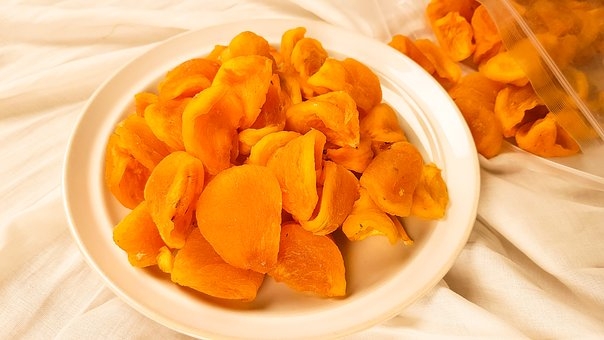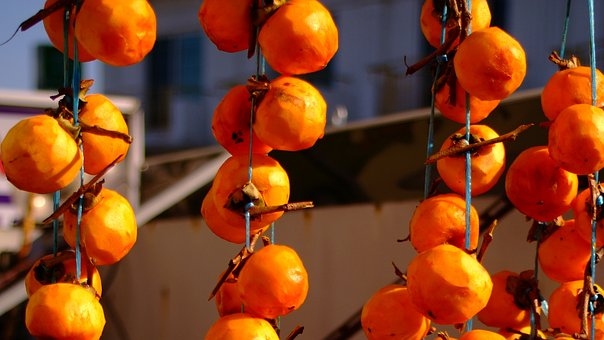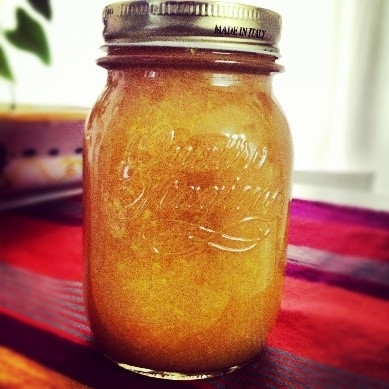If you have a mature persimmon tree, you know it produces more fruit than you can consume fresh. But the good news is that there are ways to preserve them. You can freeze them, dry them, or turn them into jam. But before we go into the details of preserving persimmons, let's quickly review the two major types of persimmons that exist.
Persimmons are generally categorized as astringent or non-astringent. Non-astringent persimmons, such as the Fuyu and Jiro, are oblate shaped and can be eaten crisp like an apple, or slightly soft. Astringent persimmons, like Hachiya, are larger and acorn shaped. They are highly acidic and bitter unless they are really ripe, to the point of being somewhat mushy.
The most common method of preserving astringent and non-astringent persimmons is to dry them. Dehydrating astringent persimmons also removes the astringency. To dry persimmons in an electric food dehydrator, select firm persimmons and wash them under running water, patting them dry with a paper towel. Remove the stems. You can peel them or leave them unpeeled. Slice them into a quarter of an inch to no more than half inch slices. Lay the slices single layer on the dehydrator tray and dehydrate. To test for dryness, cut a couple of pieces in half. You should not be able to squeeze any moisture out of them, and there should be no visible moisture. And if you fold the piece over, it should not stick to itself.
Astringent persimmons are also frequently dried whole Hoshigaki style, i.e. open air drying the whole persimmon. To dry Hachiya persimmons Hoshigaki style, harvest only orange, firm persimmons for this purpose, leaving about one and a half inches of the stem intact. Trim away the calyx (the green ruffled top,) being sure to leave the stem intact. Next, rinse the persimmon under running water, drying it with a paper towel. Peel away the skin. Tie a foot-long length of cotton string to the stem and hang it from the rafters or some other well-ventilated area for it to air dry. It can take one to two months to air dry. When dried, the persimmons should feel leathery but still pliable.
You can also freeze persimmons to use later in baked items. To freeze persimmons, puree the pulp. It is recommended to add 1/8 teaspoon of ascorbic acid to each quart of persimmon puree. Place the pulp in a canning jar or freezer container being sure to leave sufficient head space. (See https://nchfp.uga.edu/how/freeze/headspace.html if you're uncertain how much head space to leave.)
And if you do not mind the natural texture of ripe astringent persimmons, you can simply freeze the ripe pulp as is to consume later as a frozen treat.
Persimmons can also be made into jam. Although you can find a lot of persimmon jam recipes on the web, many of them are not from reputable sources and may not be safe. Only use jam recipes from trusted sources such as the National Center for Home Food Preservation, pectin companies, universities etc. If you are uncertain if a jam recipe is safe or not, contact your local UCCE Master Food Preserver Program for assistance. Two sample reputable persimmon jam recipes can be found here: www.kraftrecipes.com/recipes/mcp-persimmon-freezer-jam-63386.aspx and www.pomonapectin.com/recipes/persimmon-jam/.
Sources/references: National Center for Home Food Preservation www.nchfp.uga.edu and “Persimmon Time.” (a handout), Author: Olive McCracken, Home Advisor, University of CA Cooperative Extension, Solano County.
For more information about the UC Master Food Preserver Program, including the Food Preservation Video Library, visit mfp.ucanr.edu.
Author - UC Master Food Preserver Program Coordinator




